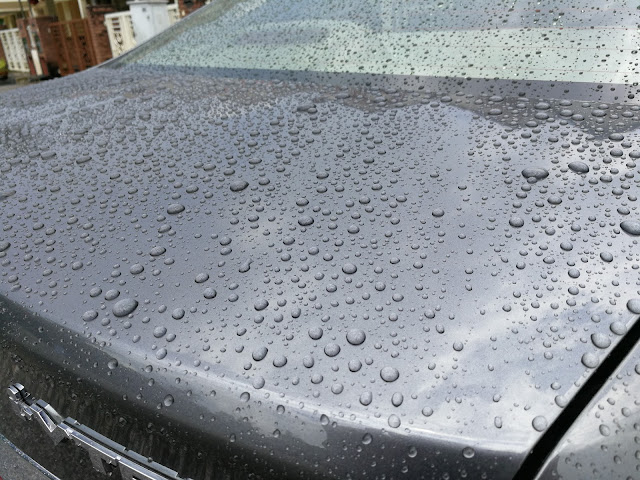Glass Refresh is a glass polish that is claimed to be able to remove not only dirt but watermarks. It came packaged with an applicator. The content inside the bottle is a white milky liquid.
So after giving the car a wash, I did snapped some before pictures of the windscreen.
As can be seen, there are some heavy watermarks.
I used to applicator to apply the milky liquid evenly with some force. I did left to right then top to bottom to make sure I covered the windshield evenly.
After a while, the liquid dried up to a powdery like form. Once fully done, I rinsed off the whitish stuff and immediately I noticed a difference in the water behaviour. The way the water flows off the windshield showed that there is totally nothing on the glass - no hydrophobic effect at all. The water just fully "wetted" the windshield.
Now this is a very clean glass. But this will not be ideal for driving. Visibility will be poor when raining.
This is where the coating comes in. After drying the windshield, I forgot to do the most important step - to take an after picture! Yes, sorry folks, there is no after picture. But trust me, most of the heavy watermarks are removed. I believe applying a second round would remove those stubborn ones.
So, after drying, I applied the roll-on coating. It is stated that the surface has to be very dry when applying. After applying, I let it fully cure (dry). It became hazy when dried up. Then, I buffed off with a dry microfiber towel. As per instruction in their website, I let it cure for more than 12 hours. So no more after behavior picture too :(.
After drying, I did not forcefully test it with water but when it rains, the water for forms droplets like any treated glass. Much like RainX. However, the coating will cause the wipers to be a little juddery but not like disco style. Still barely acceptable.
So there you have it guys. A short review.
Thanks for ready and happy detailing.


















































